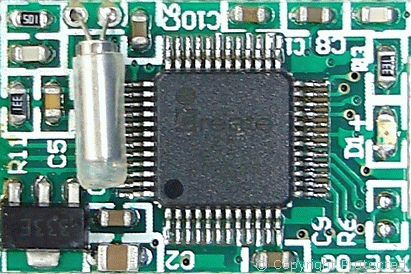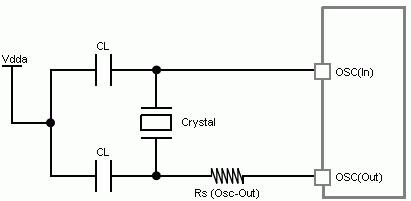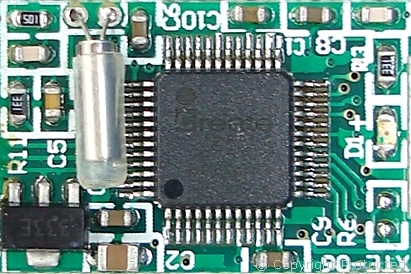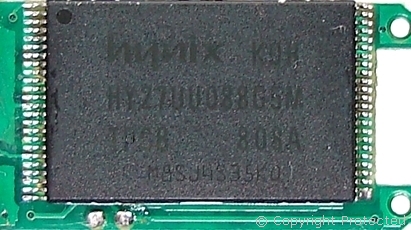USB Memory Stick Not Working

If your memory stick is not working, or not showing on the computer, then here are some basic things to check to figure out why the computer will not detect it. Many faults are repairable if you have the time, tools, and the expertise otherwise; there are always online data recovery services that can help.
If there is +3.3 V coming out of the voltage regulator then the next component to focus on is the microcontroller chip. If there is no 5 V or 3.3 V anywhere, then chances are the USB plug soldering might be defective and sometimes re-soldering helps.
If there is 3.3 V in the system, then you need to figure out if the microcontroller is working. Unfortunately, at this point a microscope is required as the terminals of the chip are very small and closely spaced.
Check Crystal Oscillator


An oscilloscope is also required to check for clock activity. The metal cylindrical component is the quartz crystal used by the oscillator to produce a clock pulse. It is worth checking for a pulse to see if it is operational. They tend to operate at around 12 MHz to 15 MHz. As you can see, being able to repair at this level separates the professionals from the pretenders.
Replacing the Microcontroller Chip

There are two possible alternatives for recovering data if the microcontroller chip has failed. You can remove the NAND Flash memory chip and plug it into a NAND reader. The second alternative is to solder a new microcontroller chip replacing the faulty one. In this case, the microcontroller chip is a LQFP48 in a 7×7 package. A USB memory stick will typically have an 8-bit CPU to perform complex mathematical operations including the Reed-Solomon extraction.
The controller has a dedicated ROM space to hold the operating instructions, and RAM space for the patch code. There is also an integrated PLL for generating the USB 2.0 clock, and a Mass Storage Controller Interface (MSCI), which supports a NAND flash memory chip.
NAND Flash Memory Chip

A NAND memory chip consists of factory-marked bad blocks. Each memory chip has a look-up table (LUT) that contains 3 sections. The first section is a list of bad blocks, the second is a list of used space, and the last section is a list of free blocks. The free blocks are extra space for swapping out bad blocks. The lifespan of a NAND flash memory is 100,000 cycles of erase-write operations. As a result, the microcontroller limits these cycles by using a 'Wear Levelling' algorithm.
During normal operation, the NAND flash memory chip can develop faults and the microcontroller is responsible for marking the bad blocks of memory, and replacing them with free blocks. However, the number of free blocks is limited. A faulty memory chip can start developing bad blocks and once the free blocks are gone, it begins to show serious data corruptions. This is the time to dispose of it and buy a new USB Memory Stick. Modern memory sticks are more reliable with extended data protection and security features, and therefore worth looking at.
This Article Continues...
USB Memory Stick ErrorUSB Memory Stick Error Anatomy
USB Memory Stick Forensics
Repairing Fake USB Memory
USB Memory Stick Recovery
USB Memory Stick Repair
USB Memory Stick Not Working